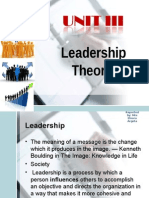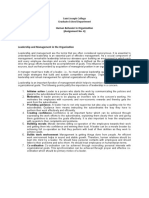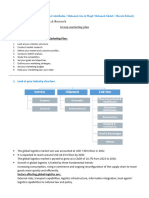0% found this document useful (0 votes)
38 views11 pagesChapter 1
The document discusses the concepts of leadership and management, emphasizing the distinct qualities and styles of leaders and managers. It outlines various leadership styles, including autocratic, democratic, laissez-faire, and paternalistic, and differentiates between managers and leaders based on their roles and influence. Additionally, it highlights essential qualities and characteristics required for effective leadership and management.
Uploaded by
Kristian James M. DionesCopyright
© © All Rights Reserved
We take content rights seriously. If you suspect this is your content, claim it here.
Available Formats
Download as DOCX, PDF, TXT or read online on Scribd
0% found this document useful (0 votes)
38 views11 pagesChapter 1
The document discusses the concepts of leadership and management, emphasizing the distinct qualities and styles of leaders and managers. It outlines various leadership styles, including autocratic, democratic, laissez-faire, and paternalistic, and differentiates between managers and leaders based on their roles and influence. Additionally, it highlights essential qualities and characteristics required for effective leadership and management.
Uploaded by
Kristian James M. DionesCopyright
© © All Rights Reserved
We take content rights seriously. If you suspect this is your content, claim it here.
Available Formats
Download as DOCX, PDF, TXT or read online on Scribd
/ 11




























































































